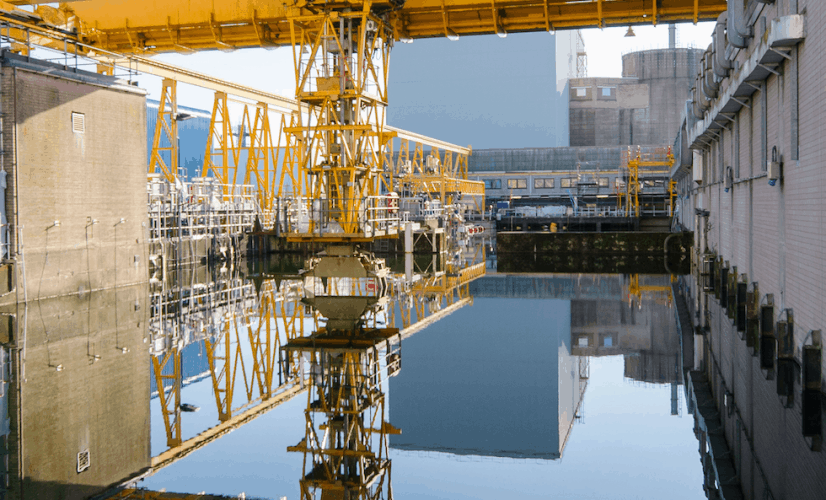Engineers are developing remote-controlled submersibles to help in the clean up of nuclear sites.
The technology is being designed to assess radiation – particularly neutron and gamma ray fields – under water to check the safety and stability of material within submerged areas of nuclear sites such as Fukushima Daiichi.

The technology could also be used to speed up the removal of nuclear waste from decaying storage ponds at the Sellafield Reprocessing facility in Cumbria, thereby shortening decommissioning programmes and potentially delivering cost savings.
Led by engineers at Lancaster University - and involving colleagues at Manchester University, Hybrid Instruments plus partners in Japan - the EPSRC-funded research project will develop a remote-controlled vehicle that can go into these environments to assess radiation levels.
The Fukushima nuclear plant was struck by a tsunami following an earthquake in March 2011. Three of the plant’s six reactors were damaged and had to be flooded with seawater to keep them cool and prevent more damage.
Similarly, nuclear fuel debris needs to be removed to enable safe decommissioning of the reactors; however it is not known how much there is, its condition and the likelihood of accidental reactions being triggered. New detection instruments developed through the project are expected to help identify nuclear fuel and help operators to deal with it safely.
Malcolm Joyce, Professor of Nuclear Engineering at Lancaster University and lead author of the research, said: “A key task is the removal of the nuclear fuel from the reactors. Once this is removed and stored safely elsewhere, radiation levels fall significantly making the plant much more safer, and cheaper, to decommission.
“Our research will focus on developing a remote-operated submersible vehicle with detection instruments that will be able to identify the radioactive sources. This capability does not currently exist and it would enable clean-up of the stricken Fukushima reactors to continue.”
Engineers at Lancaster University will concentrate on radiation detection technology whilst the Manchester team will concentrate of developing the remote-operated vehicle.
Barry Lennox, Professor of Applied Control at the University of Manchester said: “A key challenge with the remote-operated vehicle will be to design it so that it can fit through the small access ports typically available in nuclear facilities. These ports can be less than 100mm in diameter, which will create significant challenges.
This two-and-a-half-year international research project also involves Japanese partners, including the Japan Atomic Energy Agency, the National Maritime Research Institute of Japan and the Nagaoka University of Technology.
There is potential for the resulting technology to also be used by the oil and gas sector for assessment of naturally occurring radioactive material in offshore fields.
Researchers on the project include Prof Malcolm Joyce and Dr James Taylor from Lancaster University, and Professor Barry Lennox and Dr Simon Watson from Manchester University.
Scroll down to comment on this story. Please note, you will need to complete our free registration process to comment on stories and to read other user’s comments.




JLR teams with Allye Energy on portable battery storage
This illustrates the lengths required to operate electric vehicles in some circumstances. It is just as well few electric Range Rovers will go off...